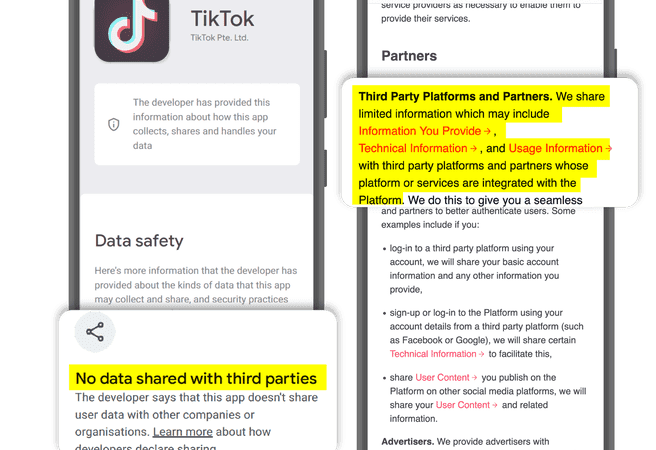
Although it has become a mainstream application in the past few years, analytics and business intelligence are still a hot topic today. The faster and more accurate business intelligence software used today, along with the growing complexity, underscores the fact that data is an asset that can easily be marked as a business priority. With the arrival of 2020, things are bound to become more and more interesting. Through its multifaceted nature, business intelligence will once again support many developments aimed at making smarter and data-driven decisions at a reasonable cost. In this digital era, many companies have made tremendous efforts to succeed, so it is vital to keep innovation and future trends.
The popularity of voice technology
Digital assistants in the business environment have been around for some time, but may lack voice capabilities. By 2020, this will change as more and more people get used to using voice as the interface. The shift in user behavior will also shift their expectations to business applications, which will not only enhance the user experience through conversational artificial intelligence, but also simplify interactions and increase productivity. In fact, companies like Oracle have dubbed their digital assistants, providing another, more intuitive way to interact and automate processes. With the development of technology, a large number of analytical queries will be generated through search, natural language processing (NLP) or speech. So obviously there is a need to analyze complex data sets and provide follow-up insights to everyone in the business in a more direct way. The wider adoption of voice technology will help to easily search or interact with business intelligence software through conversations with digital assistants. In short, I want to hear more.
Enhanced analysis
As the next wave of disruption in data and analytics, augmented analytics is effectively combining machine learning and artificial intelligence, thereby changing the way analytics is developed, used, and shared. In other words, this is the result of the maturity of business intelligence software capabilities. For companies looking to get a more complete picture of their operations, enhanced analytics will be a key tool for future business intelligence efforts, so they may be a major driver of acquisitions. From data preparation and insights to building analytical models, the ability to automate everything is more appealing to a wide range of businesses looking to streamline their analytical processes. Business intelligence tools such as Sisense, Tableau, and Looker significantly reduce the time required to build, embed, and deploy intelligent analytics, whether in the form of self-service analytics dashboards or white-label business intelligence applications. For example, Sisense’s Boto solution allows executives and industry users to upload new data resources to their accounts using Slack, Skype, or Messenger, while the software is responsible for the rest, mapping out all connections, and using natural language processing ( NLP) is ready for custom queries. What’s more, these platforms will provide faster and less biased analysis without any special skills, training or data expertise. Unlike current manual methods (such as building different models or algorithms to reveal relevant findings), users will be able to enjoy more self-service and automated services through enhanced analytics.
Enhanced data management
Following the same footsteps, enhanced data management will become increasingly important within the enterprise. Due to the development of artificial intelligence and machine learning, information management will be automated at the service level, so that highly skilled technical users can focus on more important and higher value transactions. In addition, less technical users will be more autonomous in using data. Implementing enhanced data management will help organizations organize and maintain data quality and integrity, ensuring it is accurate, complete, and consistent. Data scientists don’t spend most of their time on data processing, but instead reduce data cleansing activities and increase business productivity. As a result, the promise of a significant reduction in manual data management tasks will attract companies to study business intelligence more deeply.
Predictive analysis
As we all know, business agility is one of the most popular features today. The need for a more flexible infrastructure has once again made analytics the focus of attention, especially when predictiveness and agility come together. Regarding the ongoing digital transformation and current operations and equipment, predictive analytics will provide companies with a competitive advantage. IBM’s SPSS Statistics and SAS Advanced Analytics are examples of several software solutions that improve production and operational efficiency by extracting information and using it to predict trends and customer behavior patterns. Another benefit will be reduced costs. Due to the increasing popularity and commercialization of natural language processing (NLP) and machine learning systems, predictive analytics will be affordable to businesses of all sizes, making its trend likely to continue until 2020.
Machine learning as a service
Everything as a Service will grow rapidly in 2020. The business model that helps the B2B landscape generate continuous revenue will gain greater momentum in 2020, especially its machine learning subset. The main appeal of machine learning as a service (MLaaS) is that the on-premises data center can handle the actual computing work, which means that enterprises can start up quickly without the hassle of internal implementation. Machine learning algorithms excel in data analysis. With the development of the value proposition, machine learning as a service (MLaaS) selected the following three main factors: speed, scale, and convenience. Arguably, this is an alternative approach to machine learning deployment that provides enterprises with an affordable way to create functional models that yield useful insights. In addition, the process can be performed without skilled machine learning staff, which makes it ideal for businesses that cannot do it themselves or have no resources. Although large companies like Amazon, Google, and Microsoft already offer machine learning as a service (MLaaS) platforms, 2020 will be a year when they become mainstream applications.
Conclusion
In a world where artificial intelligence and machine learning are increasingly replacing humans to make decisions, mastering these trends means a comprehensive understanding of the business. This will be an exciting time for companies that recognize and understand the importance of business intelligence advancement. For those companies that have not done so, they will miss out on opportunities that will not only increase productivity and efficiency, but also enable sustainable development. Over time, business intelligence software has become more sophisticated in automating tasks, discovering patterns, and discovering actionable insights. Therefore, it is safe to say that companies that have not invested in business intelligence in 2020 are likely to face difficulties in their business development in the next few years.











